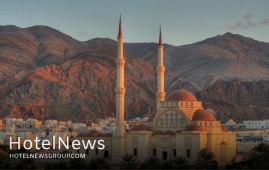
Oman has simplified its travel rules for Iranian nationals who want to stay in the sultanate for up to 14 days. “Travelers from the Islamic Republic of Iran to Oman do not require a visa for [up to] 14 days of stay,” the Iranian embassy in Muscat announced on Saturday, ILNA reported. “In addition, those who want to stay for more than 14 days, can apply for a one-month visa at Muscat airport by paying 21 Omani Rials. . . this type of visa can be extended for another month.” Moreover, negative PCR test or vaccination proof is mandatory for travelers, the report said. Earlier this year Oman announced it would drop visa fees for visitors from 103 countries, including Iran, New Zealand, the United States, the United Kingdom, Australia, China, India, and Turkey. Previously, all tourists entering Oman had to apply for a visa online in advance of their visit, and the visa would be valid for either 10 days, at a cost of about $13, or 30 days for $52. In 2019, former tourism minister Ali-Asghar Mounesan and his Omani counterpart Ahmed bin Nasser al-Mahrizi met in Muscat, discussing ways to deepen bilateral ties particularly in the arena of health and medical tourism.
Create: Dec 12, 2021 Edit: Dec 12, 2021 Regional News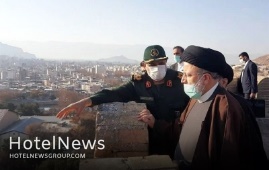
ed by members of his cabinet, including Energy Minister, Industry, Mining, and Trade Minister, Agriculture Minister, Culture Minister as well as Cooperatives, Labor and Social Welfare Minister. Falak-ol-Aflak is an imposing monument of Sassanids, which dominates the capital city of Khorramabad in western Iran. The unmissable eight-towered monument seems particularly dramatic when floodlit at night, offering picturesque views of its encircling crenelated battlements. Lorestan is a region of raw beauty that an avid nature lover could spend weeks exploring. The region was inhabited by Iranian Indo-European peoples, including the Medes, c. 1000 BC. Cimmerians and Scythians intermittently ruled the region from about 700 to 625 BC. Lorestan was incorporated into the growing Achaemenid Empire in about 540 BC and successively was part of the Seleucid, Parthian, and Sassanid dynasties.
Create: Dec 11, 2021 Edit: Dec 11, 2021 Regional News
A group of 10 Iraqi tour operators and travel agents along with their Iranian fellows are to commence a familiarization tour across the northern province of Golestan, the provincial tourism chief has announced. The group will start a four-day familiarization tour on Tuesday with the aim of getting acquainted with the province’s tourism potential as a travel destination, Ahmad Tajari said on Monday, CHTN reported. During the tour, there will be specialized meetings to exchange information and to build a stronger relationship between both sides, the official added. Both sides will also visit tourism, cultural heritage, and handicraft sites to learn more about their capabilities in these areas, he noted. The tour will also highlight the province’s strengths, including its natural, cultural, historical, handcrafts, agricultural tourism, and other assets, he mentioned. The Golestan province, with its ethnic diversity, various climate and potential in handicrafts and cultural heritage, has a very high potential for foreign tourism, and Iraq is one of its important target countries, the official explained. Last week, several Iraqi travel insiders and tour operators requested Iran to waive visa requirements for Iraqi nationals who want to enter the Islamic Republic via land borders. Earlier this year the two neighbors agreed to abolish visa requirements for air travelers. The announcement came after Iranian President Seyyed Ebrahim Raisi and Iraqi Prime Minister Mustafa al-Kadhimi met in Tehran, discussing various issues including visa waiver, a joint railway project, and increasing the level of trade. Before the coronavirus pandemic, Iraqi constituted Iran’s largest source of tourists. In return, hundreds of thousands of Iranian pilgrims head for the holy Iraqi cities of Najaf and Karbala each year to attend the Arbaeen pilgrimage, aka the Arbaeen trek, to mark an end to the 40-day mourning period following the martyrdom of Imam Hussein (AS), the grandson of Prophet Muhammad (PBUH). Golestan is reportedly embracing some 2,500 historical and natural sites, with UNESCO-registered Gonbad-e Qabus – a one-millennium-old brick tower – amongst its most famous. Narratives say the tower has influenced various subsequent designers of tomb towers and other cylindrical commemorative structures both in the region and beyond. The UNESCO comments that the tower bears testimony to the cultural exchange between Central Asian nomads and the ancient civilization of Iran.
Create: Nov 30, 2021 Edit: Nov 30, 2021 Regional News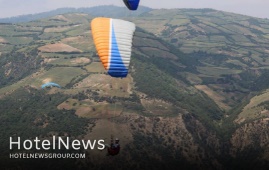
A host of international travel experts have discussed ways to expand sports tourism as one of the emerging propellers of the COVID-battered industry. Celebrated experts and academics in sports tourism debated on current and future trends in the sector and underlined the key role of sport for the development of more sustainable and inclusive tourism during the two-day World Sports Tourism Congress, which came to an end on November 26 November in Spain. At the opening ceremony, UNWTO Secretary-General Zurab Pololikashvili declared that the holding of this Congress, with strong in-person participation, is a clear message that the tourism sector is ready to welcome tourists again, and the recovery of sports tourism plays an important role, the UN body reported. Pololikashvili added: "An encouraging example is the gradual return of major sporting events, which is a major driver of the restart of tourism." Sport events of various kinds and sizes attract tourists as participants or spectators and destinations try to add local flavors to them to distinguish themselves and provide authentic local experiences. Mega sports events such as the Olympics and World Cups can be a catalyst for tourism development if successfully leveraged in terms of destination branding, infrastructure development, and other economic and social benefits. In addition, sports tourism may provide plenty of opportunities for neighboring countries of a certain state which is set to host a mega-sport event. For example, the Iranian island of Kish in the Persian Gulf has announced its readiness to host Qatar World Cup spectators. According to Iran’s deputy tourism minister Ali-Asghar Shalbafian, Iran should benefit from the 2022 World Cup as a considerable opportunity to promote its distinctive travel attractions. “With the World Cup being held in a neighboring country, Iran can benefit from this important event, which if carefully planned, can bring significant wins for various sectors, especially the tourism industry in the country,” he noted. Local officials say, the proximity of Kish to Qatar, and the lower cost of staying on this island make it possible for spectators and teams to stay here during the World Cup, which will be held from November 21 to December 18, 2022. As mentioned by the UNWTO, sports tourism is one of the fastest-growing sectors in tourism. More and more tourists are interested in sports activities during their trips whether sports are the main objective of travel or not.
Create: Nov 30, 2021 Edit: Nov 30, 2021 Regional News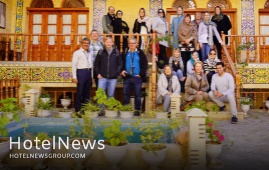
In addition to a mandatory negative PCR test certificate, international travelers visiting Iran should buy coronavirus insurance, a tourism official announced on Thursday. “Foreign tourists must buy coronavirus insurance from authorized companies when entering the country, and if they suffer from the pandemic in Iran, they will be provided with a place and treatment for 14 days,” Esmaeil Barat said, IRNA reported. In addition to providing proof of vaccination or a negative PCR, inbound passengers must have coronavirus insurance, which differs from the routine insurance coverage purchased by all tourists before the coronavirus era, the official explained. Home to countless cultural and natural travel destinations, Iran achieved good growth in attracting foreign tourists over the past couple of years but the epidemic shut down its tourism, as in many other countries, Barat said. Iranian Tour Operators Director Ebrahim Pourfaraj said earlier this month that the restoration of tourism flow to the country is very important for Iranian tour operators and travel insiders. “At the moment, we are not thinking about revenues, but we are looking for the beginning of the tourist flow to the country and renew our links [with international fellows],” Pourfaraj said. His comments came after months of steep recession triggered by massive coronavirus restrictions which led many travel insiders, hoteliers, and tour operators towards bankruptcy, unemployment, debts, and the prospects of not being competitive on the international level. As mentioned by Pourfaraj, Iran has made its best to maintain contact with global tourism markets and companies that worked with Iran in the past, especially since virtual communication and meetings have thrived. “Following the resumption of the tourist visa, visitors from Russia and France have traveled to Iran and we are currently expecting a smaller number of tourists in Iran due to the current situation in the world,” he explained. Last November, the World Tourism Organization announced that international tourist arrivals to Iran plunged 72% during the first eight months of 2020 when compared to 2019, highlighting the severe impact of COVID-19 as the main factor. Even before the pandemic, Iran’s tourism was already grappling with some challenges, on top of those Western “media propaganda” aimed at scaring potential travelers away from the Islamic Republic. Some experts believe Iran is still somehow “unknown” for many potential travelers due to such a “media war”. They, however, consider bright prospects for the tourism sector of the country if it vigorously pursues comprehensive strategies to counter U.S.-led propaganda and strict sanctions, yet does its best to loosen tough travel regulations. Iran is potentially a booming destination for travelers seeking cultural attractions, breathtaking sceneries, and numerous UNESCO-registered sites. Under the 2025 Tourism Vision Plan, Iran aims to increase the number of tourist arrivals from 4.8 million in 2014 to 20 million in 2025.
Create: Nov 27, 2021 Edit: Nov 27, 2021 Regional News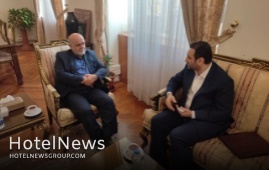
Iran is getting prepared to welcome more Iraqi sightseers, pilgrims, and medical travelers. "We are trying to re-organize and facilitate the arrival of potential Iraqi tourists who want to visit our country for various purposes including pilgrimage, medical treatment, and health," the deputy tourism minister said on Tuesday. "The Ministry of Cultural Heritage, Tourism and Handicrafts seeks to introduce Iraqi travelers to further lesser-known destinations and help increase their stay duration," ISNA quoted Ali-Reza Shalbafian as saying on Tuesday. Shalbafian made the remarks during a meeting with the Iranian Ambassador to Iraq, Iraj Masjedi, adding "Our main approach is to ease visa restrictions." Tehran and Baghdad in September agreed to ease tough visa restrictions as a step forward in broadening bilateral relations. The announcement came after Iranian President Seyyed Ebrahim Raisi and Iraqi Prime Minister Mustafa al-Kadhimi met in Tehran, discussing various issues including visa waiver, a joint railway project, and increasing the level of trade. Before the coronavirus pandemic, Iraqi constituted Iran’s largest source of tourists. In return, hundreds of thousands of Iranian pilgrims head for the holy Iraqi cities of Najaf and Karbala each year to attend the Arbaeen pilgrimage, aka the Arbaeen trek, to mark an end to the 40-day mourning period following the martyrdom of Imam Hussein (AS), the grandson of Prophet Muhammad (PBUH).
Create: Nov 27, 2021 Edit: Nov 27, 2021 Regional News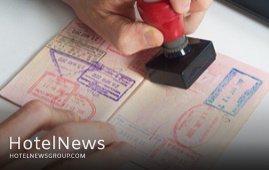
The Foreign Ministry Director-General for West Asia has said that Iran considers easing visa rules for Afghan nationals. "Facilitation of the legal entry of Afghan citizens into Iran is the best way to combat illegal entry, human trafficking, and many norm-breaking behaviors," ISNA quoted Seyyed Rasoul Mousavi as saying on Wednesday. "Today (Tuesday), only in Herat, 1509 people [Afghans] were granted entry visas to Iran," the top diplomat tweeted. Recently, Seyyed Hassan Mortazavi, Iran’s Deputy Ambassador to Afghanistan, said that twelve aid cargoes carrying Iranian aid have been delivered to the people of Afghanistan. He noted that the Leader of the Islamic Revolution has emphasized the continuation of humanitarian assistance to “the oppressed” people of Afghanistan. Mortazavi also noted that the humanitarian aid from the Islamic Republic to the people of Afghanistan has been continuing over the past three months, during the time that Afghanistan has been the scene of drastic political changes.
Create: Nov 27, 2021 Edit: Nov 27, 2021 Regional News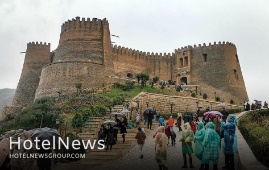
The construction of a fence wall has been completed around Falak-ol-Aflak fortress, an imposing monument of Sassanids, which dominates the capital city of Khorramabad in western Iran. “The wall has been constructed based on the original model and historical documents,” Lorestan province’s tourism chief said on Sunday. “Moreover, traditional materials have been used in the recent construction that has harmony with the fortress.” The unmissable eight-towered monument seems particularly dramatic when floodlit at night, offering picturesque views of its encircling crenelated battlements. Lorestan is a region of raw beauty that an avid nature lover could spend weeks exploring. The region was inhabited by Iranian Indo-European peoples, including the Medes, c. 1000 BC. Cimmerians and Scythians intermittently ruled the region from about 700 to 625 BC. One of the most prominent archaeological findings of the fertile region is the ancient “Luristan Bronzes”, which are noted for their eclectic array of Assyrian, Babylonian, and Iranian artistic motifs. Lorestan was incorporated into the growing Achaemenid Empire in about 540 BC and successively was part of the Seleucid, Parthian, and Sassanid dynasties.
Create: Nov 15, 2021 Edit: Nov 15, 2021 Regional News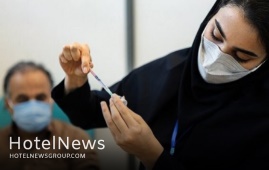
Iran must rebuild trust with the global tourism market, the Head of the Iranian Tour Operators said on Sunday. The level of Iran’s health security and vaccination against coronavirus should be advertised internationally to gain further trust from the global tourism market, Ebrahim Pourfaraj said. The health and safety level in Iran is a concern for foreign tourists, he noted, ISNA reported. It is the responsibility of the Ministry of Foreign Affairs, embassies, economic and cultural attaches, and ministries of health and tourism to inform the world about Iran’s [great achievements in] public vaccinations, the official added. During the pandemic, Iran has maintained contact with global tourism markets and companies that worked with the country in the past, especially since virtual communication and meetings have been held, he mentioned. “Following the resumption of the tourist visa, visitors from Russia and France have traveled to Iran and we are currently expecting a smaller number of tourists in Iran due to the current situation in the world,” he explained. There is, however, speculation that in the spring of 2022, the next high season of travel to Iran, the number of tourists and trips will increase, he added. In January, the official announced that international tourism flow to Iran will return to normal in 2022. Although there are requests for traveling to Iran in the current year (2021), most travel agencies and tour operators believe that the flow will go back to normal in the next year, he said. Beginning mass vaccination against the coronavirus will provide better and safe conditions for international travels in 2022, he added. Last November, the World Tourism Organization announced that international tourist arrivals to Iran plunged 72% during the first eight months of 2020 when compared to 2019, highlighting the severe impact of COVID-19 as the main factor. Some experts believe Iran is still somehow “unknown” for many potential travelers due to Western “media war”. The ancient land is potentially a booming destination for travelers seeking cultural attractions, breathtaking sceneries, and numerous UNESCO-registered sites. Under the 2025 Tourism Vision Plan, Iran aims to increase the number of tourist arrivals from 4.8 million in 2014 to 20 million in 2025.
Create: Nov 15, 2021 Edit: Nov 15, 2021 Regional News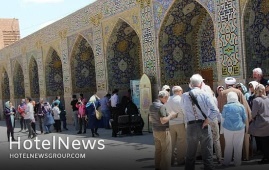
A number of Russian travel agents and tour operators have recently arrived in Iran for a week-long familiarization tour, Mehr reported on Friday. The group, which entered the Islamic Republic on Thursday through Imam Khomeini International Airport, was scheduled to travel earlier this year following the implementation of Iran-Russia visa waiver for group tours; however, because of coronavirus restrictions, they were forced to postpone the journey, the report added. Supported by Mahan Airlines, the group will tour the southern cities of Kerman, Mahan, Shiraz, and central city of Isfahan as well as the UNESCO-registered Lut Desert in the barren heartland of Iran. The tour will be held observing strict health protocols and social distancing rules. Earlier in June, the former Iranian tourism minister Ali-Asghar Mounesan finalized work on a bilateral visa-free agreement for tourist groups with Russia. In 2017, former Iranian President Hassan Rouhani and his Russian counterpart Vladimir Putin inked a visa-free agreement for tourist groups. A joint technical committee has been developing an action plan for the previously agreed visa-free travel arrangements since then, in order to put the agreement into effect. However, the outbreak of the coronavirus put a halt to the agreement. Based on the 2017 agreement tour groups of 5 to 50 people heading to [easternmost parts of] Russia from Iran or vice versa are granted a visa-free stay of up to 15 days. Back in May, Mostafa Sarvari, who presides over the tourism marketing and advertising office of the Iranian Tour Operators Association, announced many Russian tourists are eager to travel to Iran, recounting his Russian counterparts. “Many [potential] Russian travelers are motivated to visit novel and lesser-known destinations such as Iran that could be a safe and attractive destination,” he said. “According to Russian tourism experts, the feedback from Russian tourists who have traveled to Iran has been very positive, and its reflection, especially on social media, has caused a great deal of enthusiasm and interest.” According to Ebrahim Pourfaraj, who heads the Iranian Tour Operators Association, rounds of negotiations have been held between Iranian tour operators, travel marketers, and their Russian counterparts. “We’ve been commenced talks with some Russian travel agents to put Iranian destinations on their itineraries…. And the Iranian Tour Operators Association has also entered negotiations with Russian unions for outbound tours to attract more travelers from Russia. Pourfaraj says the majority of potential Russian travelers are unaware of the vast tourist attractions that exist in every corner of Iran. “The fact is that Iran’s political and economic relations with Russia are considered as good, but this has nothing to do with attracting tourists because it is directly connected with the Russian people. It is the Russian people who must choose Iran as their destination.” Maya Lomidze, executive director of the Association of Tour Operators of Russia, had told Sputnik that the visa agreement may significantly surge the tourist flows between the two countries, just like it happened when a similar deal was signed between Russia and China. The flow of Iranian tourists to Russia increased by 50-70 percent following the operation of direct flights that connect Iran to St. Petersburg, Moscow, and Sochi, she said. Iran is taking proactive measures in line with the long-term goal of 20 million tourists by 2025.
Create: Nov 9, 2021 Edit: Nov 9, 2021 Regional News
Home to one of the world’s oldest continuous major civilizations, with historical and urban settlements dating back to 7000 BC, Iran seeks to attract more foreign travelers, and in particular, vacationers from China. Iran’s deputy tourism minister on Wednesday stressed the need for all-inclusive fault detection, and identification of effective factors to expand tourism ties with China in a meeting with travel experts from the state-run institutes and the private sector. We should pay attention to the Chinese market in a more pragmatic approach,” Ali-Asghar Shalbafian said in the follow-up session held to formulate new strategies to expand tourism cooperation between the two ancient countries. So far, steps have been taken to examine the Chinese tourism market, but today the (essential) need is to implement executive measures based on [our] fault detection and macro planning,” the official noted. Insignificant numbers of Chinese restaurants, Chinese-language guides, or even inappropriate lodging facilities are deemed to be among the main reasons why Chinese arrivals in Iran fall short of expectations. Some experts believe that part of this failure comes from inside Iran because Chinese restaurants are scanty across the country while the cuisine is of high importance for the majority of the Chinese people. Moreover, Chinese travelers need fluent Chinese-language tour guides whose numbers are limited in the Islamic Republic. Last year, Tehran’s ex-ambassador to Beijing said Iran was seeking to become a tourist destination for millions of potential travelers from China as the two countries are working on a 25-year comprehensive cooperation plan that includes boosting relations in the field of tourism. Speaking in the TV program, Mehdi Safari reminded some 200 million Chinese tourists to visit different countries annually, adding “according to this agreement Iran will become one of the tourist destinations for Chinese travelers so that Iran can attract one to two million Chinese tourists to the country.” This will create a transformation in Iran’s tourism industry and will create jobs and a large market for the handicrafts industry of the country,” he expanded. In 2019, the Islamic Republic waived the visa requirement for Chinese nationals willing to visit the country. The decision was made to attract more foreign tourists to the country; however, it was a unilateral measure, because Iranian tourists visiting China still need visas. Under the 2025 Tourism Vision Plan, Iran is expecting to increase the number of tourism arrivals from 4.8 million in 2014 to 20 million by 2025.
Create: Nov 9, 2021 Edit: Nov 9, 2021 Regional News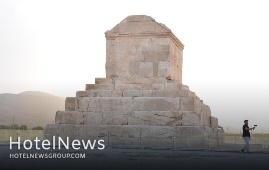
Iranian government has allocated a sum of 200 billion rials (about $4.7 million at the official exchange rate of 42,000 rials per dollar) to develop tourism infrastructure at the UNESCO-designated Pasargadae. A budget of 200 billion rials has been allocated to Pasargadae after President Ebrahim Raisi visited the Achaemenid site earlier in October, a senior tourism official, Javad Vahedi, said on Friday. The Pasargadae complex, as a magnificent World Heritage site, has a high tourism potential in the field of cultural and historical tourism, and we must plan to attract more tourists,” the official explained. Situated about 50 km north of Persepolis, Pasargadae was the first dynastic capital of the Achaemenid Empire, founded by Cyrus II the Great, in Pars, the homeland of the Persians, in the 6th century BC. Its palaces, gardens, and the mausoleum of Cyrus are outstanding examples of the first phase of royal Achaemenid art and architecture and exceptional testimonies of Persian civilization. The UNESCO World Heritage site is also home to a complex water supply system for the time that comprises cisterns, tunnels, underground canals, and ducts, which are locally known as qanats. It is believed that the development of qanats began about 2,500 or 3,000 years ago in Persia (Iran), and the technology spread eastward to Afghanistan and westward to Egypt. Although new qanats are seldom built today, many old qanats are still used in Iran and Afghanistan, chiefly for irrigation. The 160-ha archaeological site of Pasargadae presents some of the earliest manifestations of Persian art and architecture. It includes, among other monuments, the compact limestone tomb on the Morgab plain that once held Cyrus the Great’s gilded sarcophagus; Tall-e Takht (“Solomon’s Throne”), a great fortified platform built on a hill and later incorporated into a sprawling citadel with substantial mud-brick defenses; and the royal ensemble, which consists of several palaces originally located within a garden layout (the so-called “Four Gardens”). Pasargadae became a prototype for the Persian Garden concept of four quadrants formally divided by waterways or pathways, its architecture characterized by refined details and slender verticality. Pasargadae stands as an exceptional witness to the Achaemenid civilization. The vast Achaemenid Empire, which extended from the eastern Mediterranean and Egypt to the Hindus River in India, is considered the first empire to be characterized by a respect for the cultural diversity of its peoples. This respect was reflected in the royal Achaemenid architecture, which became a synthesized representation of the empire’s different cultures. Pasargadae represents the first phase of this development into a specifically Persian architecture which later found its full expression in the city of Persepolis.
Create: Oct 31, 2021 Edit: Oct 31, 2021 Regional News
